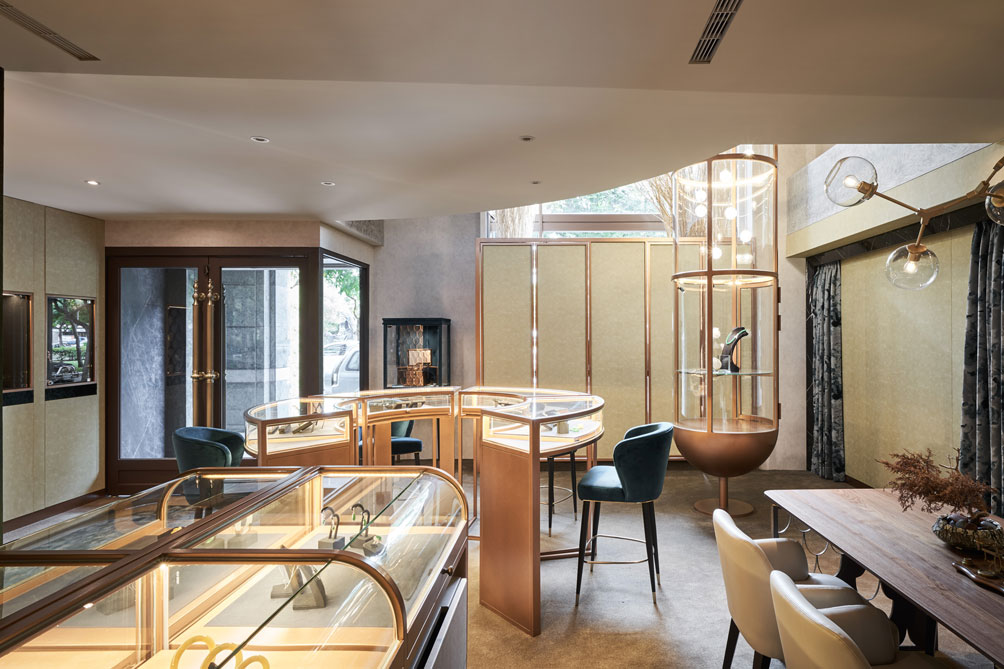Interview with Hsin Ting Weng, Founder / Design Director of RIS Interior Design, TW

Interview with Lilit Devejian & Christina Kazanchyan, Principle Designers of LUXYSPACE, US
February 13, 2020
Interview with Stan Maes, Owner of Stan Maes Product Design, BE
February 17, 2020
Hsin Ting Weng
As Founder and Design Director of RIS Interior Design, Weng’s dedication towards design allowed her to create designs that continues to borrow from the past to usher in the future.
Interview with the 2019 MUSE Design Awards Winner - Hsin Ting Weng
In 2000s, computer science was the most popular major in college, and Weng was lead to study information engineering department. However, Weng couldn't find herself being passionate among numbers, logics, and coding, and started thinking further and taking references from media design. Finally, Weng made up her mind to transfer studying at visual communication department. In Taiwan, visual communication is more likely graphic design instead of spatial design. Through interdisciplinary experience, Weng built self-knowledge and gradually developed her own design language.
After graduating from college, there wasn’t any vacancy for graphic design at markets in that time. Knowing “Nothing endures but change,” Weng was led to involve in spatial design field. Spatial design opened another door of self-exploration to Weng. Multiple material compositions reminded Weng that user experience could affect the interpretation toward design. To be a designer meant that that person was also a problem-solver, Weng integrated design that was not only ornamental but utilitarian as well.
Nowadays, there are bountiful aspects to define what design is. Weng regards lifestyle is a lifelong mentor that all of us are still absorbing learning from it. Her design mostly gets inspired from observation of daily-life chores along the way. Living forms depend on inhabitants’ behavior and represent their lifestyle. Thus, being a considerate observant is the key to produce great interior design.
Without formal academic curriculums of architecture or spatial design, Weng is always keen on diversity of life events:
Seeing operas to study how scenes transform throughout the play and to understand stage sound effects;
Having meals in posh restaurant, not only to taste food, but also to observe the dish presentation;
Participating in kinds of seminar, not only to check whether finished products really payoff or not, but also to explore the intention behind creations;
Visiting exhibitions, to research the possibilities of material combination, and to discover latest trends;
Travelling the world to confront cultural shocks and to embrace different opinions.
Design can be formless, but can’t be isolated from life.
To consider today is a fragmentation era, the world is a huge melting pot. In our recent projects, besides western design elements, we are tending to blend with our local cultures and old craftsmanship of Taiwan. For example, one of our latest revamping projects, to reminisce about traditional material technique in 1970s, authentic Taiwanese tile floorings are mostly preserved. Among information exploration, cross-cultural composition is a way to show creativity and becoming a precious element to give a distinct touch to the space.
In Taiwan, ‘feng-shui’ is a common belief and deeply rooted in our culture. Based on its theory, there are rules for masterplanning and sometimes they become barricades among space. However, we believe designers are capable to compromise and create something differently.
For example, one of our residential projects, the apartment owner is an advocator of feng-shui, so we customized and installed a light-weight screen instead of adding a block at entrance as he asked for.
Winning Entries
FBBD Jeweler | 2019
(read more at Muse Awards)
RIS Interior Design
RIS Interior Design is established in 2013 in Taichung, with the concept of "ideological thoughts, delicate and silky", it pursues contemporary aesthetics and functional details...


